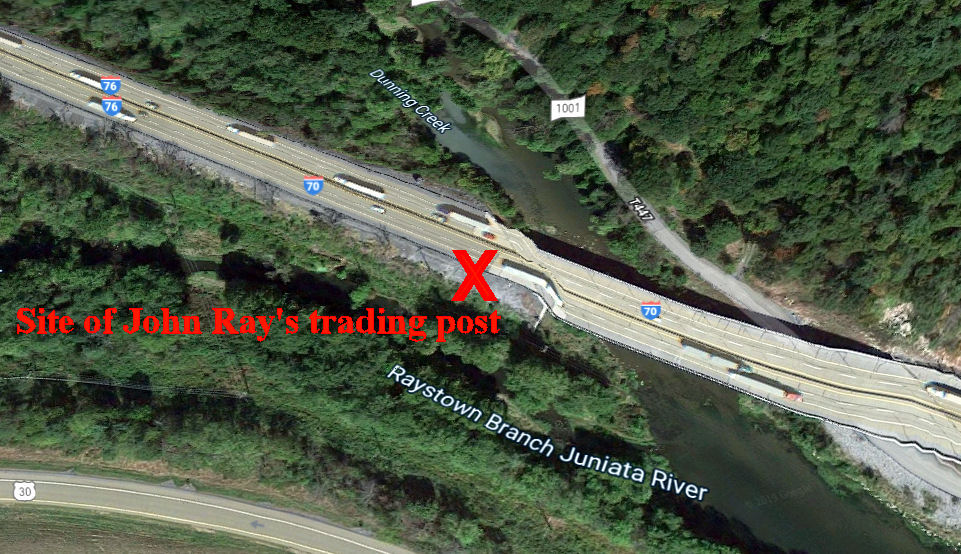
Ray's Town
Most people, historians included, tend to think of things in terms of the day and culture in which they live. People living today tend to think of a town as being a village. The word 'town', though is derived from the German word zaun which meant a fence or wall that surrounded two or more buildings. From the German came the Old English tun. And from 'tun' we get our modern English word town. The word, town, therefore indicated two or more buildings surrounded by a fence or wall.
The trading posts set up by the so-called Indian traders often consisted of at least two buildings, usually simple log structures. One building would serve as the trader's living quarters. The other building would provide storage space for the supplies which the trader had brought with him from the east to barter to the Amerindians for beaver pelts. Not all of the traders built two cabins; some conducted their trading business in their single log cabin houses.
John Ray's trading post consisted of two or three structures, therefore it was known as Ray'stown. Thomas Cresap's trading post consisted of numerous structures, therefore it was known as Cresap'stown. Frank Stephens' trading post consisted of two or more structures, therefore it was known as Frank'stown. James Dunning's trading post, though, consisted of only a single log cabin, therefore it was known simply as 'Dunnings'.
The difficult thing for people to understand is that there were no villages within the defensive walls of the trading posts. Villages traditionally have consisted of many structures and inhabitants. They included churches and blacksmiths and tailor's shops and grist mills. The Indian Trader's trading post, no matter that their fenced in cabins bore the name of town, derived from zaun, did not consist of churches, blacksmith shops and grist mills. There were no 'villagers' besides the traders themselves. Raystown was not a village; it was a building.
John Ray came to the frontier to establish a trading post where the Dunning Creek empties into the Juniata River. Early historians claimed that his trading post consisted of three buildings. Regardless of the number, those buildings were log cabins. He did not exert the effort or cost of constructing a stone building. As a result, over the years, the log cabins that made up Ray's town fell into ruin, disintegrated and disappeared.
The image below shows the probable location of the trading post, the town of John Ray.





